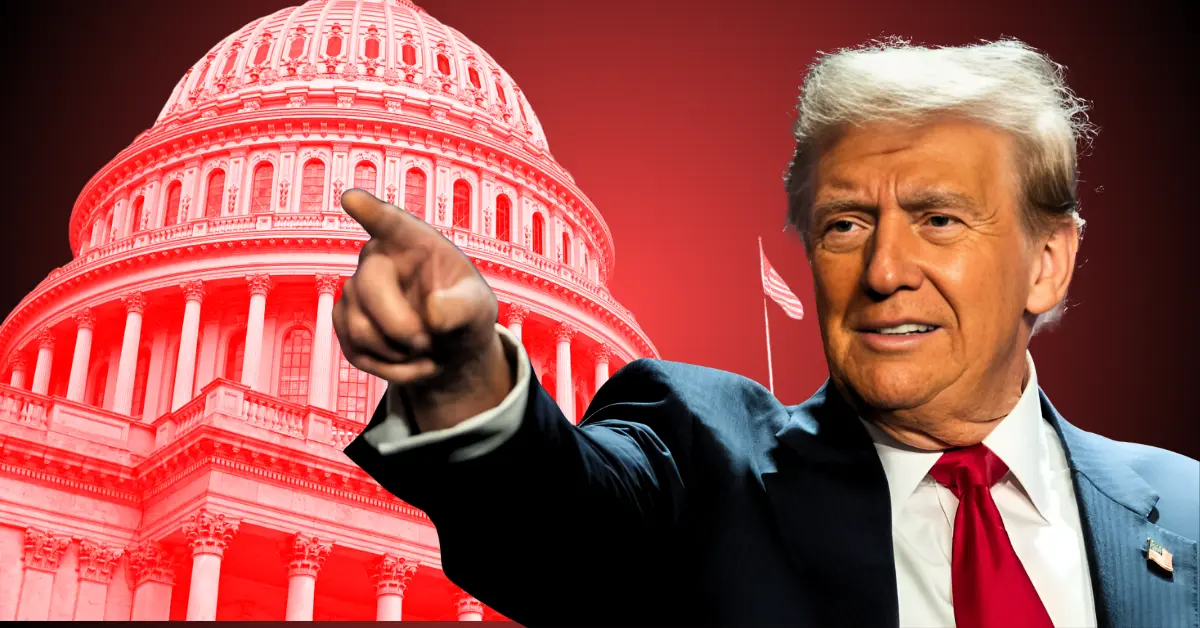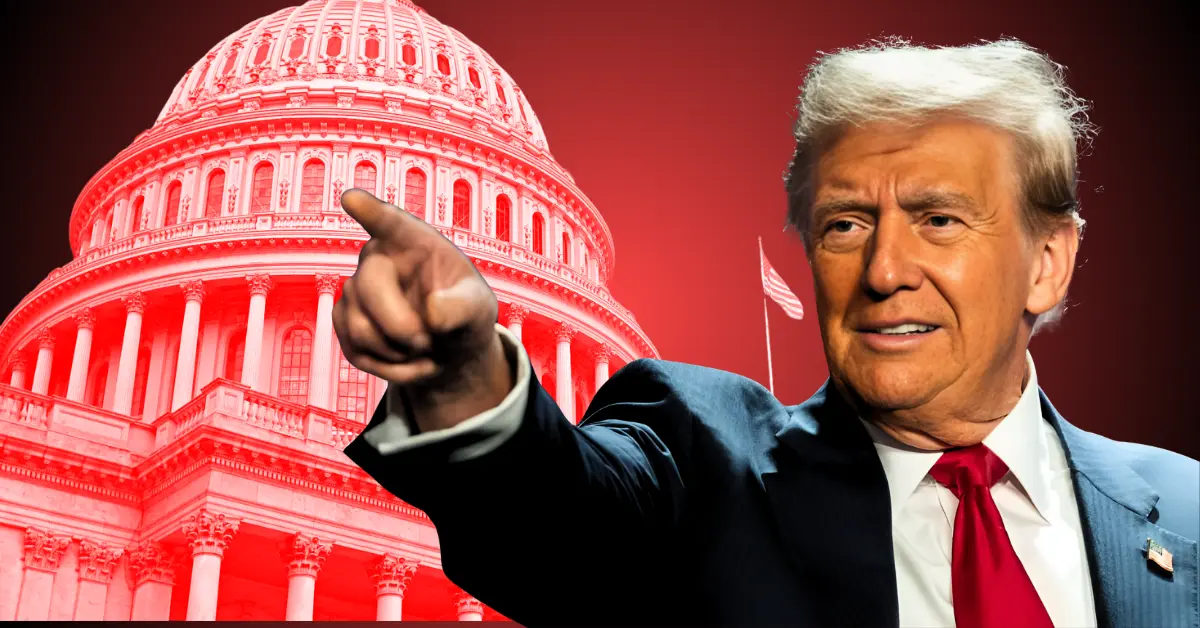The Clash of Economic Visions: Trump’s Fed Visit and the Battle for Monetary Policy
Introduction: A Presidential Intervention
The Federal Reserve, often referred to as the world’s most powerful economic institution, has long operated with a degree of independence that is the envy of central banks worldwide. This independence was put to the test when former President Donald Trump made an unprecedented visit to the Fed’s headquarters, publicly demanding a dramatic reduction in interest rates. This moment was not just a clash of personalities but a fundamental disagreement about the role of monetary policy in shaping the U.S. economy. Trump’s visit and his subsequent calls for a 300-basis-point rate cut highlighted the tension between political expediency and economic prudence, raising critical questions about the Fed’s autonomy and the long-term implications of such interventions.
The Historical Context: A President and the Fed
Trump’s visit to the Fed was not an isolated incident but the culmination of a sustained campaign to influence the central bank’s policies. Throughout his presidency, Trump was vocal about his dissatisfaction with the Fed’s interest rate decisions, often criticizing Chairman Jerome Powell, whom he had appointed. Trump’s frustration stemmed from his belief that higher interest rates were stifling economic growth and making it more difficult for the U.S. to compete globally. His calls for lower rates were framed as a necessary step to boost the economy, reduce the national debt, and maintain America’s economic dominance.
However, the Fed’s mandate is not solely about economic growth. It is tasked with maintaining price stability and achieving maximum employment, often requiring a delicate balance between these goals. The Fed’s independence is designed to shield it from political pressures that could compromise its ability to make decisions based on economic data rather than short-term political considerations. Trump’s visit and his public demands challenged this independence, raising concerns about the potential erosion of the Fed’s credibility and effectiveness.
The Swiss Model: A Misguided Comparison
One of the central arguments Trump made during his visit was the need for the U.S. to adopt interest rate policies similar to those of Switzerland. He pointed to Switzerland’s low benchmark interest rate as evidence that such policies could work in the U.S. as well. However, this comparison is flawed for several reasons.
First, Switzerland’s economic structure and monetary policy environment are vastly different from those of the U.S. Switzerland is a small, open economy with a strong currency and a banking system that plays a significant role in global finance. Its interest rate policies are designed to manage the Swiss franc’s value and combat deflationary pressures, which are not the primary concerns of the U.S. economy.
Second, Switzerland has at times implemented negative interest rates, a policy tool that the U.S. has not seriously considered. Negative rates are intended to encourage spending and investment by penalizing savings, but they also carry significant risks, including financial instability and reduced bank profitability. The U.S. economy, with its larger and more diverse financial system, would face different challenges and risks if it were to adopt such policies.
Trump’s argument that the world would “collapse” without the U.S. adopting low interest rates also overlooks the interconnectedness of the global economy. While the U.S. is a major economic power, its policies do not operate in isolation. A sudden and dramatic reduction in interest rates could have unintended consequences, including capital flows, currency fluctuations, and financial market volatility.
The Risks of a 300-Basis-Point Cut
Trump’s demand for a 300-basis-point (3%) reduction in interest rates is a radical proposal that would represent a significant departure from the Fed’s gradual and measured approach to monetary policy. While lower interest rates can stimulate economic activity by making borrowing cheaper and encouraging investment, such a drastic cut carries substantial risks.
One of the most significant concerns is inflation. A rapid injection of liquidity into the economy could lead to an overheating, pushing inflation above the Fed’s target range of 2%. This could erode purchasing power, hurt consumers, and ultimately destabilize the economy. The Fed has historically been cautious about inflation, recognizing that once it becomes entrenched, it can be difficult to control.
Another risk is the potential for asset bubbles. Artificially low interest rates can encourage excessive risk-taking and fuel speculative bubbles in asset markets, such as real estate or stocks. When these bubbles inevitably burst, they can trigger financial crises and economic recessions. The 2008 financial crisis is a stark reminder of the dangers of such bubbles.
Furthermore, a 300-basis-point cut could signal a lack of confidence in the U.S. economy, potentially undermining the dollar’s value and raising borrowing costs in the long run. It could also be interpreted as political interference in the Fed’s operations, damaging its credibility and independence. The Fed’s ability to make decisions based on economic data rather than political pressure is crucial for maintaining investor confidence and ensuring the stability of the financial system.
The Fed’s Dilemma: Independence vs. Political Pressure
The Fed’s primary mandate is to maintain price stability and full employment. This requires a delicate balancing act, using monetary policy tools, including interest rates, to steer the economy towards these goals. The Fed operates independently of the White House to ensure that its decisions are based on economic data and analysis, rather than political considerations.
However, the Fed’s independence is not absolute. It is subject to oversight by Congress and the executive branch, and its policies can be influenced by political pressures. Trump’s visit and his public demands for lower interest rates have put the Fed in a difficult position. On one hand, the Fed must resist political pressure to maintain its credibility and independence. On the other hand, it must also be responsive to the needs of the economy and the concerns of the American people.
Chairman Powell has consistently emphasized the Fed’s commitment to data-dependent decision-making, suggesting that interest rate adjustments will be based on economic indicators, rather than political pressure. This stance has put him at odds with Trump, but it is essential for preserving the Fed’s integrity and effectiveness.
The Fed is keenly aware that succumbing to political pressure could have detrimental consequences for the economy. It could undermine investor confidence, create uncertainty, and ultimately hinder the Fed’s ability to achieve its dual mandate. Therefore, resisting external pressure, even from the President, is paramount.
The Broader Implications: A Test of Democratic Institutions
Trump’s visit to the Fed and his demands for lower interest rates have broader implications for the U.S. political and economic systems. They raise critical questions about the balance of power between the executive branch and independent institutions like the Fed. They also highlight the challenges of maintaining economic stability in an era of political polarization and populist rhetoric.
One of the most significant implications is the potential erosion of the Fed’s independence. Even if the Fed does not directly comply with Trump’s demands, the persistent pressure can subtly influence its decision-making process. The perception of political interference can damage the Fed’s credibility, both domestically and internationally. This could make it more difficult for the Fed to operate effectively and achieve its mandate.
Another implication is the increased scrutiny of the Fed’s operations. Trump’s actions have brought the Fed into the spotlight, raising questions about its transparency, accountability, and decision-making processes. While this scrutiny can promote greater understanding of the Fed’s role and responsibilities, it can also politicize the institution and make it more vulnerable to political pressures.
Finally, Trump’s demands have created policy uncertainty, making it difficult for businesses and individuals to plan for the future. This uncertainty can dampen investment and economic growth, undermining the very goals that Trump seeks to achieve. It also highlights the risks of using monetary policy as a tool for short-term political gain, rather than as a means of achieving long-term economic stability.
Conclusion: The Path Forward
Donald Trump’s visit to the Federal Reserve and his insistent calls for aggressive interest rate cuts highlight the enduring tension between political influence and central bank independence. While a president naturally desires policies that support economic growth, the Fed’s mandate to maintain price stability and full employment requires a more nuanced and independent approach.
The comparison to Switzerland, while appealing in its simplicity, overlooks the complex economic realities that necessitate tailored monetary policies. A drastic 300-basis-point cut, as advocated by Trump, carries significant risks, potentially fueling inflation, creating asset bubbles, and undermining the Fed’s credibility.
Ultimately, the Fed must navigate this challenging landscape by adhering to its data-dependent approach, resisting political pressure, and prioritizing the long-term health of the U.S. economy. Maintaining this delicate balance is crucial for preserving the Fed’s independence and ensuring its effectiveness in achieving its dual mandate. The future economic trajectory of the United States hinges on this delicate balance, and the lessons learned from this episode will shape the relationship between politics and monetary policy for years to come.












